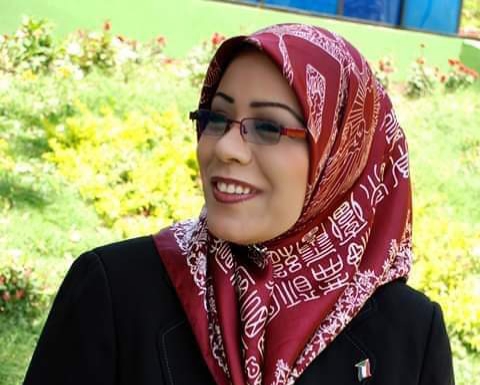The Majestic Women

By Dr. Enas Mohammed Ahmed
Indeed, they are the majestic women, the women of my homeland—daughters of warriors, sisters of the brave, wives of heroes, and mothers of martyrs. Allow me to extend my Independence Day greetings to every Sudanese man and woman who carries Sudan in their hearts with pride, belonging, and identity.
A special salute goes to the women of my homeland, enduring the harsh and fierce war.
Women worldwide have suffered greatly throughout history during wars, facing horrific acts of humiliation, torture, and inhumane treatment. Women and children remain the most vulnerable groups targeted during armed conflicts, drawing significant attention from international humanitarian law due to their physical vulnerability and higher susceptibility to violations in wartime.
Women enjoy dual protection: as part of the civilian population and through special agreements dedicated to their rights under international humanitarian law. This is because they bear the brunt of wars with their blood and that of their children, the disintegration of families through displacement and refuge, and the violations directly inflicted upon them, such as killing, detention, and sexual violence—a weapon of war employed to spread terror and fear, especially among women.
This reality prompted the global community to establish strict customary principles during armed conflicts, forming the foundation of international humanitarian law. These principles—chivalry, humanity, and the Martens Clause—stem from the contributions of Fyodor Fyodorovich Martens, Russia’s representative at the 1899 Peace Conference. He emphasized protecting civilians during armed conflicts, advocating for safeguards even in the absence of explicit legal texts. Known later as the precautionary principle, it rests on three pillars: established customs among nations, the general conscience of humanity, and humanitarian principles as integral to international law. These guidelines shaped the international standards for protecting victims of armed conflicts, irrespective of gender, and laid the groundwork for codifying rules on civilian protection during warfare.
The first comprehensive civilian protection rules were documented in the Lieber Code (1863), a domestic ordinance applied during the American Civil War. Although not international, it influenced the codification of wartime norms, prohibiting violence and rape against civilians and penalizing perpetrators. Subsequently, declarations like the St. Petersburg Declaration (1868) and the Brussels Declaration (1874) highlighted civilian protection, especially for women, culminating in the Hague Regulations of 1907, which furthered these safeguards.
As armed conflicts evolved with increasingly inhumane consequences, the need for specific conventions focusing on women became urgent. This led to the Geneva Conventions of 1949 and their two additional protocols of 1977, forming the backbone of international humanitarian law. These frameworks aim to regulate armed conflicts, minimizing harm to non-combatants. Protocol I (1977) explicitly addressed the health impact of violence, particularly sexual violence against women, while Protocol II prohibited acts undermining human dignity, such as inhumane treatment and sexual exploitation.
Moreover, the Geneva Conventions emphasized the protection of women detainees. For example, the Third Geneva Convention mandates separating women from men in detention facilities under female supervision, safeguarding them from indignities, abuse, or torture for information extraction.
Further advances include UN Security Council Resolution 1325 (2000), addressing the profound impact of conflicts on women and their role in peacebuilding. This resolution emphasizes four pillars: participation, protection, prevention, and relief/recovery. Following this, Resolution 1820 (2008) condemned sexual violence as a weapon of war, identifying it as a war crime or crime against humanity. Subsequent resolutions, such as 1888 (2009), 1960 (2010), and 2106 (2013), reinforced accountability for sexual violence in conflicts and empowered peacekeeping missions to safeguard women and children.
The international community has taken steps to criminalize sexual violence, treating it as a war crime when committed systematically, as seen in the tribunals for the former Yugoslavia and Rwanda. Yet, when examining the ongoing atrocities in Sudan, particularly those targeting women by terrorist militias, a grim and tragic picture emerges.
A recent UN report reveals that over 81% of war victims in Sudan are women and children, with countless women facing daily threats of death, abduction, forced disappearance, detention, and sexual violence. In October 2024, the UN Independent Fact-Finding Mission in Sudan highlighted urgent civilian protection needs, documenting systematic sexual violence that qualifies as war crimes or crimes against humanity. Similarly, Samantha Power, head of the U.S. Agency for International Development, reported that rebel militias have launched persistent attacks on civilians in Sudanese states, committing crimes against humanity, including sexual violence.
In December 2024, Human Rights Watch accused terrorist militias of widespread, systematic sexual violence, constituting crimes against humanity. The international community must act to address these grave violations of international humanitarian law, urging the UN and African Union to assist civilian victims, especially women and children.
UN Under-Secretary-General for Humanitarian Affairs, Tom Fletcher, also sounded the alarm over ongoing sexual violence against women in Sudan by militias.
We continue to call on the international community to classify these militias as terrorist organizations. Their heinous crimes against the Sudanese people demand accountability and justice. These armed groups, with their extensive record of war crimes and crimes against humanity, must be designated as terrorist organizations under international law.
Source: Al-Muḥaqqiq



